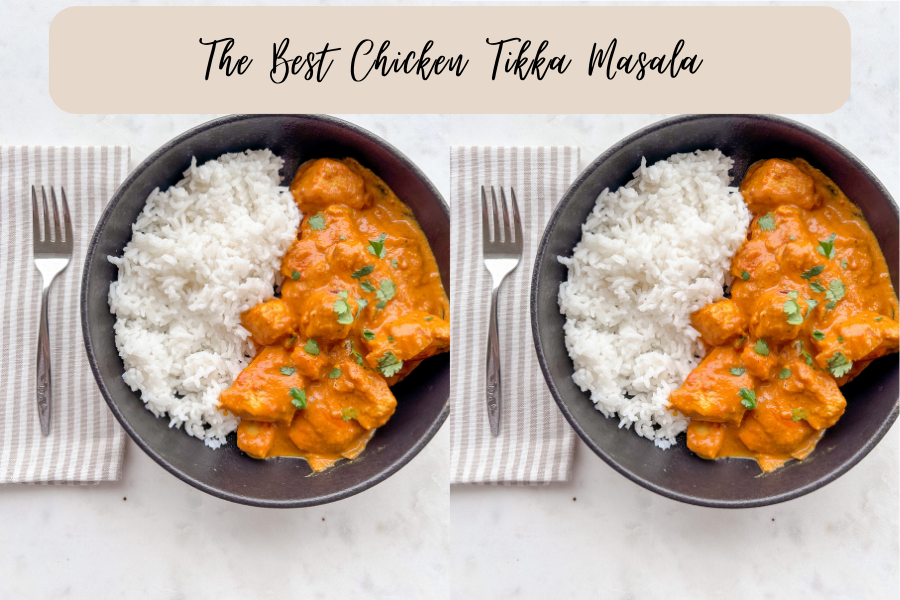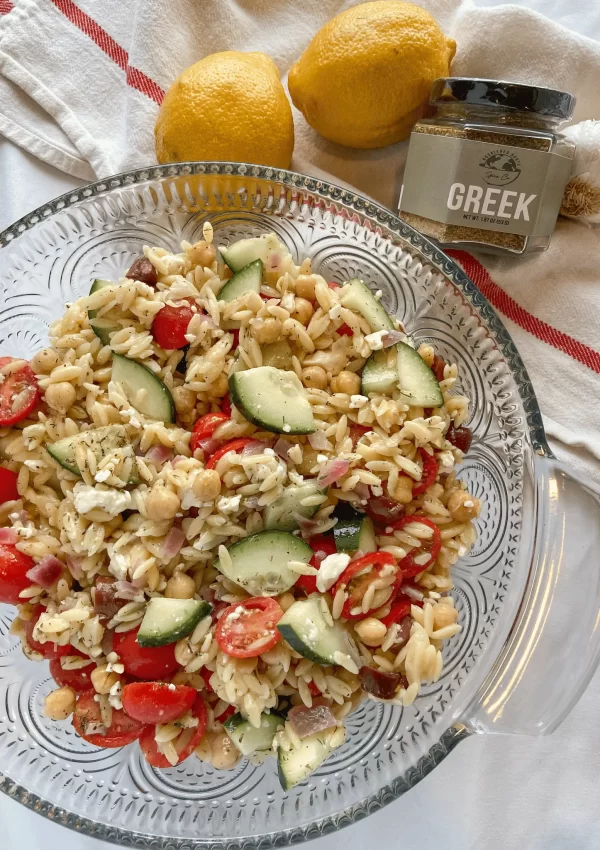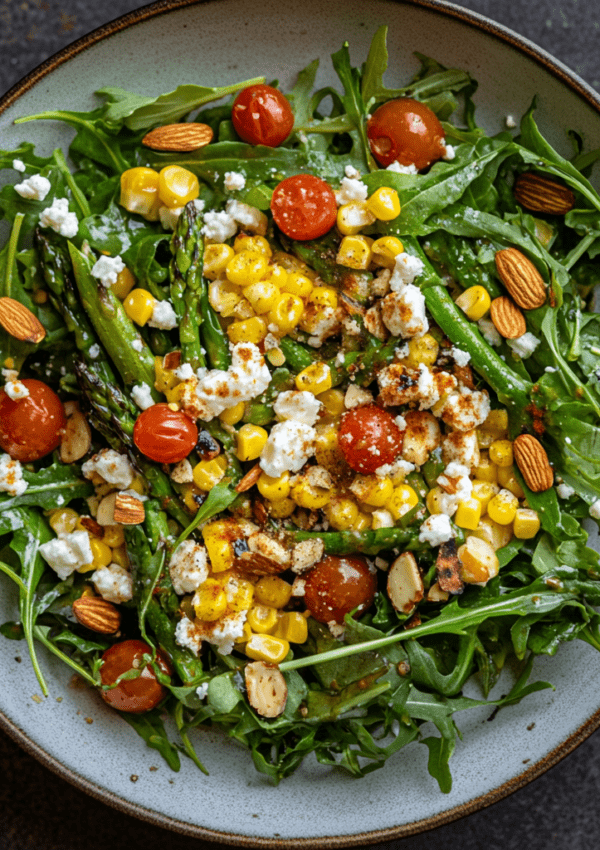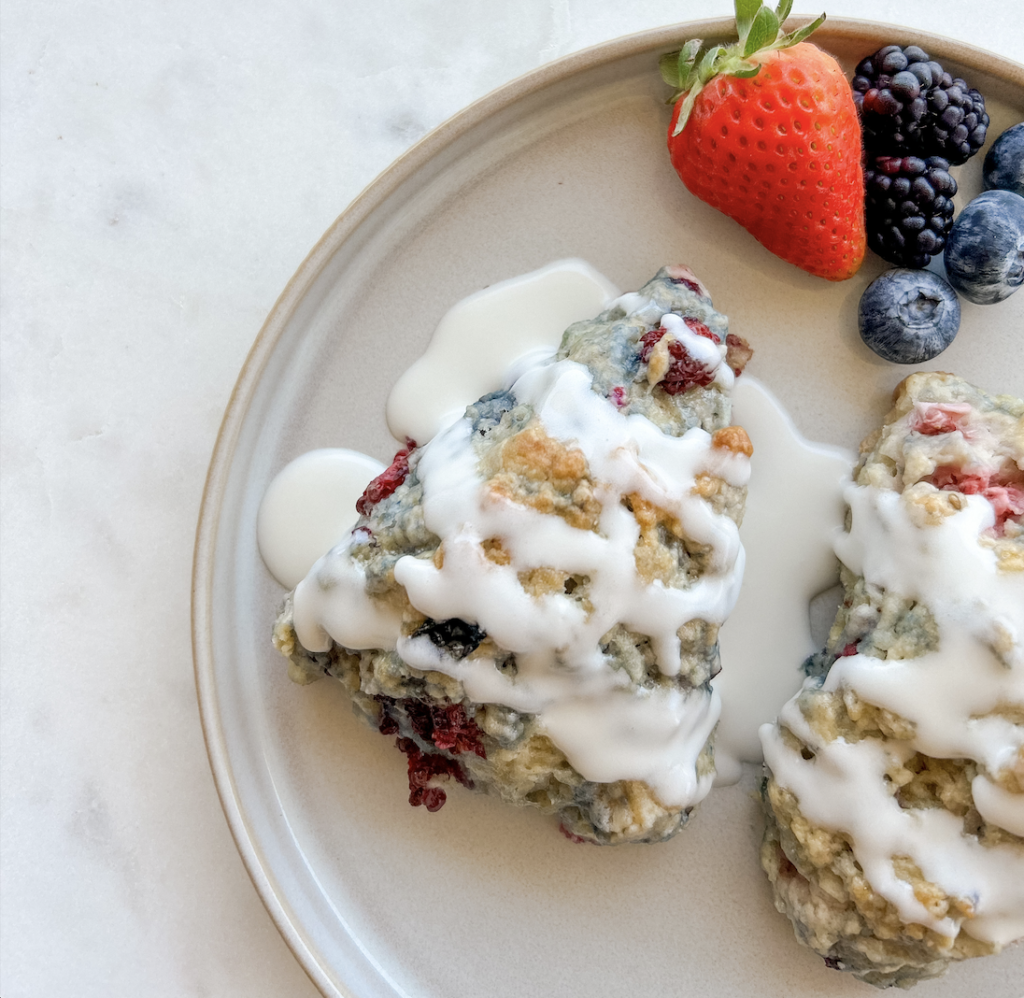I can’t wait to share the best chicken tikka masala recipe with you! This is simple to make and INCREDIBLY flavorful.
If you have never had authentic chicken tikka masala before, your tastebuds are truly missing out. When most people think of Indian food, they think of “curry” and “spicy”. I’m here to tell you that tikka masala has virtually no heat – just LOADS of flavor! I’m also here to tell you that Indian food is more than just curry, but we will get into that in today’s post.
In this blog, we will dive into the history of Tikka Masala, the difference between chicken tikka and tikka masala, an Indian spice deep dive, the purpose of using Greek yogurt in this recipe, a nutrition breakdown, storage & reheating information, and of course – how to make the best chicken tikka masala recipe.
In this recipe, I use my salt-free Indian spice blend from my spice company – The Spice Girl Kitchen. I’m completely biased because it is, after all, my spice recipe and the best salt-free Indian seasoning on the market. But feel free to use whatever Indian seasoning you have on hand – or make your own at home!
This post is all about the Best Chicken Tikka Masala Recipe!
The History of Authentic Tikka Masala
I was surprised to learn that while the origins of Tikka Masala are disputed, it is generally said to have originated in the United Kingdom as a way to take traditional Indian dishes such as butter chicken and chicken tikka and adapt them to suit British tastes.
What is the difference between Chicken Tikka and Tikka Masala?
The two dishes start the same – chicken, greek yogurt, lemon juice, spices, garlic, and ginger. The main difference between the two lies in the cream sauce added to tikka masala. Chicken tikka is served without sauce, while tikka masala is served with its well-known creamy tomato sauce.
I guess those Brits really like their cream!
Spice Deep Dive
Spices are an essential part of Indian cuisine. They add depth and complexity to the dishes while offering an array of health benefits! The specific spice combinations create the insanely aromatic dishes that Indian food is known for. What kind of spice girl would I be if I didn’t break down the spices for ya?!
garam masala
Garam masala is not a plant that can be found in nature and then ground up for use in food. It’s a blend of spices! Depending on the region, garam masala blends can vary – but they typically include cinnamon, cardamom, cloves, cumin, coriander, and black pepper.
To make garam masala at home, combine equal parts cinnamon, cardamom, cloves, cumin, coriander, and black pepper.
curry powder
Curry powder is also mistakenly thought of as a “single-origin” spice. However, curry powder is also a spice blend! Again, exact curry recipes vary by region, but you can expect most curry blends to contain cumin, coriander, turmeric, ginger, garlic, and chili powder!
Other Frequently Used Indian Spices
Cumin is an earthy, slightly bitter spice frequently used in Indian cuisine. Coriander is a seed that has a slightly sweet, citrusy flavor and is typically combined with cumin in Indian dishes. Tumeric is famous for its yellow color and health benefits. It has a slightly bitter, warm flavor and gives Indian food that signature yellow/orange color. The wildly versatile pantry staple called paprika is also part of Indian cuisine and is used in combination with the other spices listed.
tikka masala
The key spices in a tikka masala are cumin, coriander, turmeric, paprika, and garam masala. To make a tikka masala blend at home, add two parts cumin and coriander to one part turmeric, paprika, and garam masala.
My Indian Spice Blend is essentially an all-in-one solution to Indian food because it balances all of the spices listed above. Since the typical American household doesn’t cook a ton of Indian food (however, I hope this recipe inspires you to make more of it!), having a flavor-done-for-you spice blend is convenient and more cost-effective than buying each of these spices individually! Oh, and it’s completely salt-free, sugar-free, and filler-free – just like the rest of my culturally-inspired seasoning line.
What is the purpose of using Greek Yogurt?
Greek yogurt is a key ingredient in this recipe. It is an important ingredient for the marinade, but it also plays a key role in the sauce. Let’s break down the reasons why Greek yogurt is included in this dish:
1. Lactic acid
The lactic acid in the yogurt helps tender the chicken, making the result tender and juicy.
2. Added Creaminess
The thick and creamy texture of yogurt adds richness and creaminess to the sauce. Using yogurt cuts down the use of heavy cream, resulting in an equally creamy texture without making the dish too heavy
3. All that tang
The slightly tangy flavor of Greek yogurt adds a nice contrast to the spices in this dish!
4. Nutrition
Greek yogurt is well known for its calcium, probiotic, and protein content. So the addition of Greek yogurt results in a more nutrient-dense dish.
Nutrition Breakdown
This is going to be a *quicker* nutrition breakdown today – so let’s hit the basics.
Per serving, this recipe contains:
- 489 calories
- 23 g fat
- 22 g carbs
- 48 g protein
- a little less than 2 g of fiber
While it doesn’t pack a ton of fiber and it is a little heavier on the fat (42% of calories from fat), it is still well-balanced (meaning it contains enough protein + carbs + fats to create a very satisfying meal!). Plus, it contains a ton of protein thanks to the lean chicken breast and Greek yogurt (not to mention the added calcium and probiotics that the yogurt provides as well)!
If you are looking to boost the fiber content of the meal, add a salad on the side, serve it with a roasted vegetable medley, or serve a high-fiber fruit for dessert.
Store & Reheat
As a general rule of thumb, anything that has a sauce tends to store and reheat well. That’s another reason I love this recipe! You can thank the delicious sauce for not drying out your chicken!
Store
Fridge: Transfer the dish to a large glass storage container with an airtight lid. Allow it to cool to room temperature before securing the lid (about 30-45 minutes; the exact time depends on the amount of meat). Store in the fridge for up to 4 days.
Freezer: You can also freeze the dish for up to 3 months. Place the dish in the fridge to thaw overnight for best results.
Reheat
Microwave: Place the dish in a microwave-safe dish, cover, and microwave on high for 1-3 minutes or until heated through. If reheating larger amounts, stir halfway through to warm it evenly.*
Stovetop: Place tikka masala in a pot over medium-high heat. Once the sauce is simmering, reduce to medium-low and cover for 5-7 minutes or until heated through. Stir occasionally.*
Oven: Preheat oven to 350 degrees F. Place the dish in an oven-safe dish, cover it with foil, and cook for 10-15 minutes.* This is a great option to keep the food warm for a crowd!
* Total time depends on the amount you are reheating.
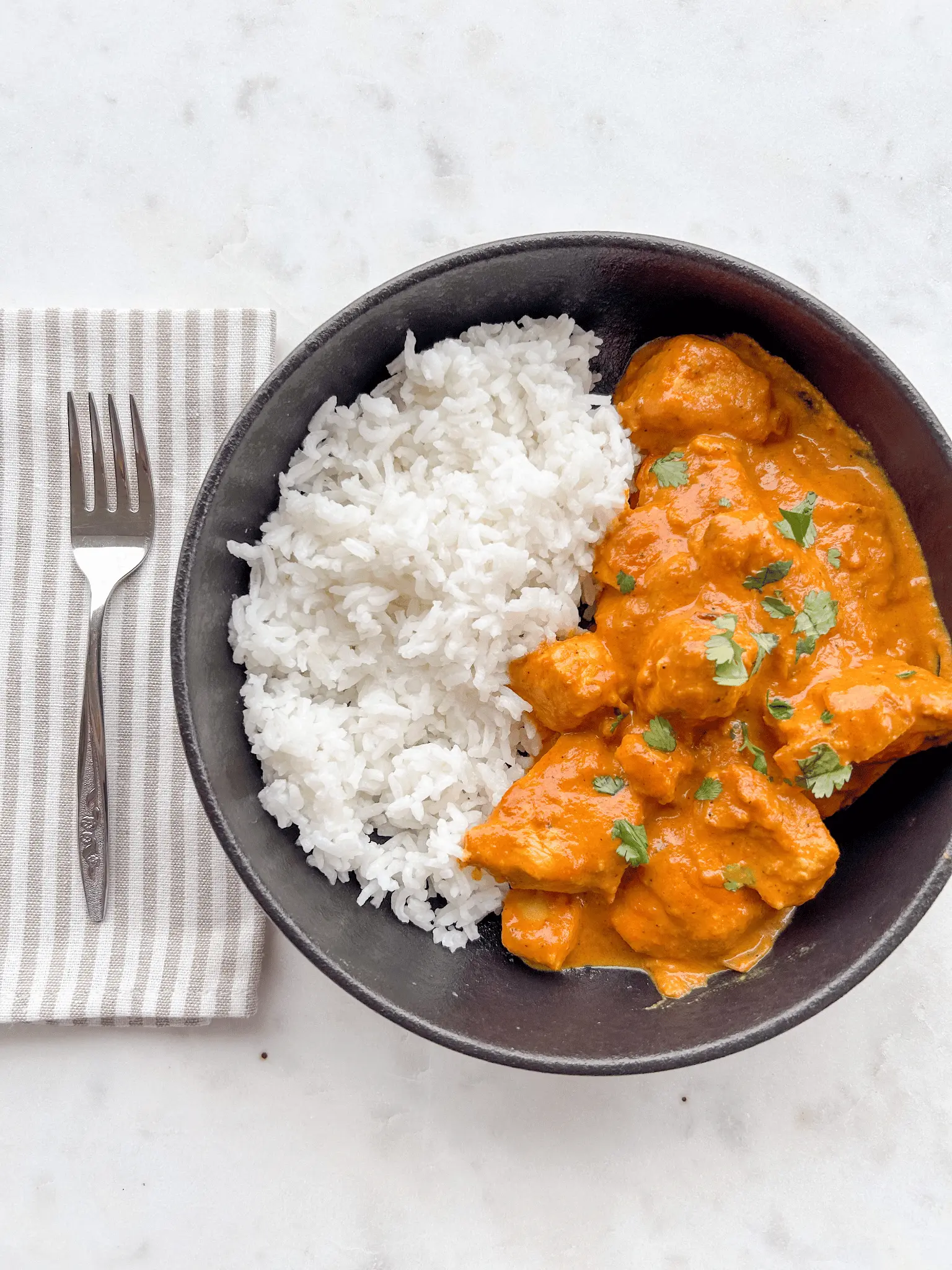
The Best Chicken Tikka Masala Recipe (Authentic)
Ingredients
Method
- In a large mixing bowl, add all of the ingredients from the "marinade" section. Stir until chicken is well coated and spices are well combined into the mixture. Cover with plastic wrap and let it sit in the refrigerator for at least 30 minutes (or as long as overnight).
- While chicken is marinating, prep the remaining ingredients.
- When it's time to make the sauce, add the butter or ghee to a large skillet over medium-high heat. Add the onion and cook for about 5 minutes. Next, add in the garlic and ginger and cook an additional 30 seconds.
- Add the marinated chicken to the pan and cook until browned on all sides. This should take about 8 minutes.
- Add in the tomato sauce, Indian spice, and salt. Reduce heat and simmer for about 15-20 minutes, stirring occasionally, until the chicken has cooked through (165 ℉) and the sauce has thickened.
- Add in the heavy cream, stir to combine, and simmer on low for an additional 5 minutes.
- Garnish with cilantro and serve with rice and/or naan bread! Enjoy!
Notes
Spice Blend
The key spices in a tikka masala are cumin, coriander, turmeric, paprika, and garam masala. To make a tikka masala blend at home, add two parts cumin and coriander to one part turmeric, paprika, and garam masala. Or you can use my Indian spice for a convenient, cost-effective, all-in-one solution to homemade Indian food!Store & Reheat
As a general rule of thumb, anything that has a sauce tends to store and reheat well. That’s another reason I love this recipe! You can thank the delicious sauce for not drying out your chicken!Store
Fridge: Transfer the dish to a large glass storage container with an airtight lid. Allow it to cool to room temperature before securing the lid (about 30-45 minutes; the exact time depends on the amount of meat). Store in the fridge for up to 4 days. Freezer: You can also freeze the dish for up to 3 months. Place the dish in the fridge to thaw overnight for best results. I wouldn’t recommend freezing the rice.Reheat
Microwave: Place dish in a microwave-safe dish, cover, and microwave on high for 1-3 minutes or until heated through. If reheating larger amounts, stir halfway through to warm it evenly.* Stovetop: Place tikka masala in a pot over medium-high heat. Once the sauce is simmering, reduce to medium-low and cover for 5-7 minutes or until heated through. Stir occasionally.* Oven: Preheat oven to 350 degrees F. Place dish in an oven-safe dish, cover it with foil, and cook for 10-15 minutes.* This is a great option to warm the food for a crowd! * Total time depends on the amount you are reheating.This post was all about how to make the Best Chicken Tikka Masala Recipe.
Did you make this recipe? Make sure to tag me @thespicegirlkitchen_ on Instagram or @thespicegirlkitchen on TikTok! I love seeing your recreations! I will be your ultimate hype woman!
Want to learn more about Kelsey? Click here to read her story!

